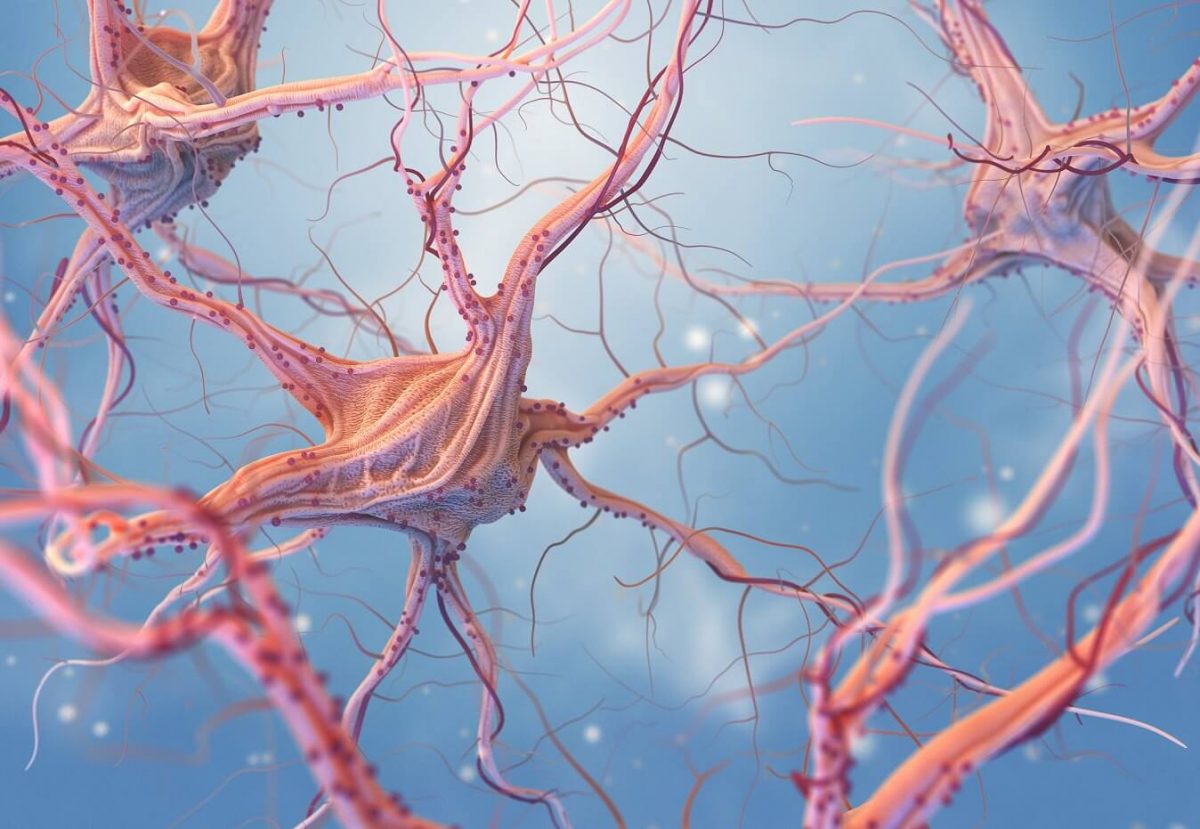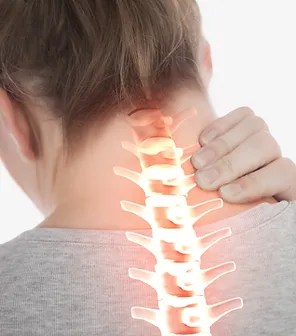
Neck / Arm Pain
Cervical myelopathy is a condition that goes beyond a simple morning-time crick in your neck. Chronic neck pain can make daily life challenging and reduce your overall quality of life.
Care You Can Trust.
Dr. Jacob Rosenstein has your back.

Approach
Spinal disorders can be daunting and difficult for anyone. North Texas Neurosurgical Consultants will work with you and your family to find the most effective and least invasive treatment necessary to help alleviate your pain and restore your mobility.
Highly regarded and board certified, Dr. Jacob Rosenstein is your #1 choice for spinal disorders in DFW.
Experts
Dr. Jacob Rosenstein specializes in the diagnosis and treatment of spine related disorders. A board-certified neurosurgeon, Dr. Rosenstein has been a leader in his medical field and in full-time practice in Arlington, Texas since 1985.
Technology
Dr. Jacob Rosenstein is proud to have hosted an informative 13 episode season of The Dr. R Show that aired on KTXD in the Dallas/Fort Worth market. The show focused on answering health questions in a weekly TV program covering medical issues with specialists in various fields of medicine. Each episode included interviews with Dr. Rosenstein and another physician, giving the viewer in depth understanding of various medical issues.
Treatments We Offer.
- Anterior Cervical
- Lumbar Laminectomy
- Posterior Lumbar
- Spinal Cord Decompression
- Spinal Fusion
Anterior Cervical
Anterior Cervical Discectomy and Fusion
For people who suffer from chronic neck pain, anterior cervical discectomy and fusion (ACDF) can help. This surgery helps to solve the problem of chronic pain in the cervical region of the spine. Here’s how it works, who it might help, and what to expect. As always, if you have additional questions, get in touch with the team at North Texas Neurosurgical Consultants for more information. We’re always happy to help.
What ACDF surgery complications should I be aware of?
As with all surgeries, there is a risk of complications. In the case of ACDF surgery, the primary risk is not the surgery itself but standard complications that arise from receiving general anesthesia. Respiratory problems can arise due to the anesthesia and a patient’s position during the procedure. This complication varies widely in conjunction with a patient’s overall health prior to surgery and underlying medical conditions.
Other rare complications can include:
-
Pain at the bone graft site
-
Infection at the surgical site (or in tissues surrounding it)
-
Vertebral infection
-
Excessive bleeding

Lumbar Laminectomy
Lumbar Laminectomy with Nerve Root Decompression
The prospect of facing back surgery can be unsettling. While it is true that there are a number of treatments for back pain that are good first steps towards relief, in some cases the pain persists. For severe lower back pain, a lumbar laminectomy with nerve root decompression may help you ease pain and restore mobility when other treatments have been unsuccessful.
Keep reading to learn more about this potential treatment. If you have additional questions, get in touch with the team at North Texas Neurosurgical Consultants for more information.
Spinal stenosis is a narrowing of the spinal column, often in the lumbar spine but sometimes in the cervical spine. This narrowed spinal column can occur due to age. It can lead to some very painful symptoms, including:
-
Sciatic pain (sciatica) radiating across the hip and down the leg
-
Numbness or weakness in the legs and arms
-
Pins and needles sensations in the extremities
-
Less sensory sensitivity
-
Difficulty walking

Posterior Lumbar
Posterior Lumbar Interbody Fusion
Spinal fusion surgery is a process that can bring more support and stability to a weakened spine that has not responded to other medical interventions. Posterior lumbar interbody fusion is one type of spinal fusion surgery. It uses a smaller initial incision to help protect the lower back muscles and improve your recovery and pain relief.
Here’s what you should know about this procedure if you’re suffering from pain. If you have additional questions, get in touch with the team at North Texas Neurosurgical Consultants for more information. We’re always happy to help.
Before undergoing any type of spinal fusion surgery, it is important to consider more conservative treatment approaches. Posterior lumbar interbody fusion should be part of a comprehensive approach to back pain that includes less invasive interventions, like physical therapy, as well as lifestyle changes to diet and exercise.
Conditions that may benefit from posterior lumbar interbody fusion as a treatment option include:
-
Spinal stenosis
-
Herniated discs
-
Degenerative disc disease
-
Scoliosis (curvature of the spine)

Spinal Cord
Spinal Cord Decompression
Spinal cord decompression is a surgical procedure that can offer pain relief to patients who have tried a number of treatments for back pain without success. The team at North Texas Neurosurgical Consultants welcomes any questions you have about this procedure and are always happy to help or provide additional information.
How can spinal cord decompression help with my pain?
Spinal cord decompression surgery is a surgical option you may consider when more conservative treatment options have been unsuccessful. The most common condition treated by spinal decompression surgery is spinal stenosis. Other related conditions include:
-
Osteoarthritis
-
Scoliosis
-
Injury to the spine
-
Metastatic spinal tumor
-
Certain bone diseases
-
Rheumatoid arthritis
-
Infection
Spinal cord compression has the following five trademark symptoms:
-
Pain and stiffness in the neck, back, or lower back
-
Sciatic pain that radiates across the buttocks and down the hip and leg
-
Numbness or weakness in the extremities
-
Loss of sensation or numbness in the feet (or weakness that causes loss of foot control)
-
Sexual dysfunction

Spinal Fusion
Spinal Fusion
For many patients with hard-to-treat spinal issues, a spinal fusion procedure can help them towards a life with less pain. Here’s what you should know about this surgery, the conditions it can help treat, and overall recovery. If you have additional questions, get in touch with the team at North Texas Neurosurgical Consultants for more information. We’re always happy to help.
What is spinal fusion surgery?
The spine consists of 33 vertebrae in five different spinal regions. From the top to the bottom, these regions are:
-
Cervical
-
Thoracic
-
Lumbar
-
Sacral
-
Coccyx

Insurance Accepted
Here is a list of some of the insurances we currently accept. Please contact our office directly at 817-467-5551 for a full list of accepted insurance. We look forward to assisting you.
Patient Education
The spine is a delicate structure protecting the vulnerable spinal cord and nerves. Surgery requires a delicate, precise well-planned and executed strategy to optimize recovery. As no two patients are alike an individualized assessment is performed to evaluate your unique situation so that a customized treatment plan can be formulated.
Dr. Rosenstein understands that surgery should be considered as a last resort. He utilizes a full spectrum of conservative treatment measures prior to considering surgical intervention. These include physical therapy, medication, and therapeutic spinal injections. Where medically necessary further diagnostic testing may be considered.
Dr. Rosenstein is dedicated to evaluating complex problems and offering comprehensive solutions with a personal touch. Trained in the latest techniques he and his attentive staff will strengthen your confidence in your healthcare treatment decisions in a professional, pleasing and positive setting. He is committed to providing the highest standard of care as you regain your functional independence.
Your first office visit begins with a thorough history, physical examination, and review of any prior diagnostic testing. You are encouraged to bring all previous medical records including any diagnostic testing and prior operative reports to your first appointment. Once all of the information has been reviewed, treatment options will be presented and discussed in detail. Most instances of neck and lower back pain are effectively treated without surgery. Surgery is considered only after extensive conservative treatment measures have failed.





